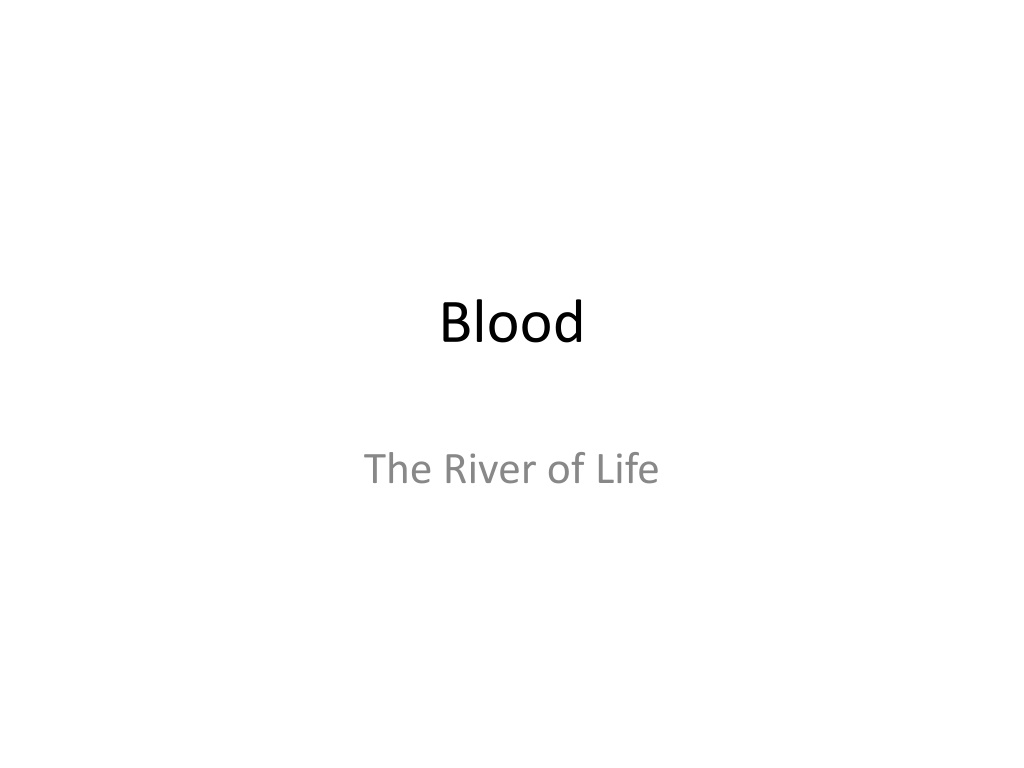Understanding the Components and Functions of Blood
Explore the intricate details of blood, the river of life, including its components such as formed elements, plasma, leukocytes, platelets, and the process of hematopoiesis. Learn about the physical traits of blood, the role of proteins in plasma, types of leukocytes, and the importance of platelets in blood clotting. Delve into conditions like sickle cell anemia and polycythemia while understanding the essential functions of blood in the body.
Download Presentation

Please find below an Image/Link to download the presentation.
The content on the website is provided AS IS for your information and personal use only. It may not be sold, licensed, or shared on other websites without obtaining consent from the author. Download presentation by click this link. If you encounter any issues during the download, it is possible that the publisher has removed the file from their server.
E N D
Presentation Transcript
Blood The River of Life
I. Components-connective tissue A. Formed elements B. Erythrocytes C. Buffy coat D. Plasma
II. Physical traits A. Sticky B. Color varies with oxygen load C. 5X thicker than water D. pH 7.35-7.45 E. 8% body weight F. Healthy men 5-6 liters
III. Plasma A. 90 % water with a lot of solute B. Stuff dissolved Gases, electrolytes, hormones, plasma proteins, wastes, nutrients C. Proteins most abundant 1. Albumin-osmotic balance, pH buffering 2. Clotting factors-fibrinogen 3. Some hormones 4. Antibodies-globulins
IV. Formed elements A. Erythrocytes (RBC s) 1. shape 2. anucleate 3. hemoglobin (13-18 g/ml male 12-16 g/ml female) 4. no internal organelles 5. 5 million/cubic mm 6. anemia 7. http://www.youtube.com/watch? v=mCf6V5RoBEA
8. sickle cell anemia a. Causes b. Populations effected c. Sickle cell anemia vs trait d. Advantages of trait 9. Polycythemia
B. Leukocytes 1. 5,000-10,000 cubic mm 2. complete organelle complement 3. protective moveable army 4. diapedesis 5. positive chemotaxis 6. phagocytosis 7.http://www.youtube.com/watch?v=JnlULOj UhSQ&feature=related
8. Types of leukocytes a. Granulocytes Neutrophils are phagocytes of bacteria and fungi Eosinophils increase in number during parasitic worm infections Basophils release histamine
b. Nongranulocytes - Lymphocytes produce antibodies - Monocytes turn into macrophages
C. Platelets 1. noncellular 2. 300,000/mm 3. required for blood clotting
V. Hematopoiesis 1. red bone marrow flat bones skull and pelvis 2. stem cell 3. erythropoietin produced in kidneys 4. thrombopoietin
VI. Hemostasis A. Sequence 1. vascular spasm 2. platelet plug forms 3. coagulation occurs fibrinogen -> fibrin Platelet plug or thrombus
B. Disorders of hemostasis 1. thrombus 2. embolus 3. thrombocytopenia 4. hemophilia
VII. Bood Groupings A. Definitions 1. antigen 2. antibody 3. agglutination B. ABO blood group 1. Type A (40%) 2. Type B (11%) 3. Type AB (4%) 4. Type 0 (45%)
C. Rh factor 1. family of antigens 2. Rhesus monkey 3. positive vs. negative 4. negative does not have antibodies automatically 5. erythroblastosis fetalis
D. Blood typing 1. serum anti-A 2. serum anti-B























